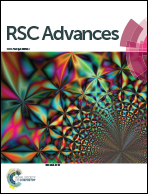The inhibitory influence of 3-β-hydroxybutyrate on calf thymus DNA glycation by glucose
Abstract
Glycation can change DNA structure and cause strand breaks, mutations, and changes in gene expression. DNA damage may also contribute to the pathogenesis of some diseases, including cancer, aging, inflammation, and neurological disorders. The 3-β-hydroxybutyrate is a ketone body, and is produced in the liver. Here we report the inhibition of glucose-mediated DNA glycation by 3-β-hydroxybutyrate for the first time. The effect of 3-β-hydroxybutyrate on the formation of Amadori and advanced glycation end products (AGEs) of DNA incubated with glucose for 4 weeks were investigated using various techniques. These included UV-vis, circular dichroism (CD), fluorescence spectroscopy, and agarose gel electrophoresis. The results of UV-vis and fluorescence spectroscopy demonstrated that DNA-AGE formation was decreased in the presence of 3-β-hydroxybutyrate. The NBT test indicated that the Amadori product formation of glycated DNA was also reduced in the presence of 3-β-hydroxybutyrate. Also, according to CD and agarose gel electrophoresis results, the structural change of glycated DNA in the presence of 3-β-hydroxybutyrate was decreased. Thus, 3-β-hydroxybutyrate possesses an inhibitory role in DNA glycation and can reduce the adverse effects of glycation under high glucose conditions.


 Please wait while we load your content...
Please wait while we load your content...